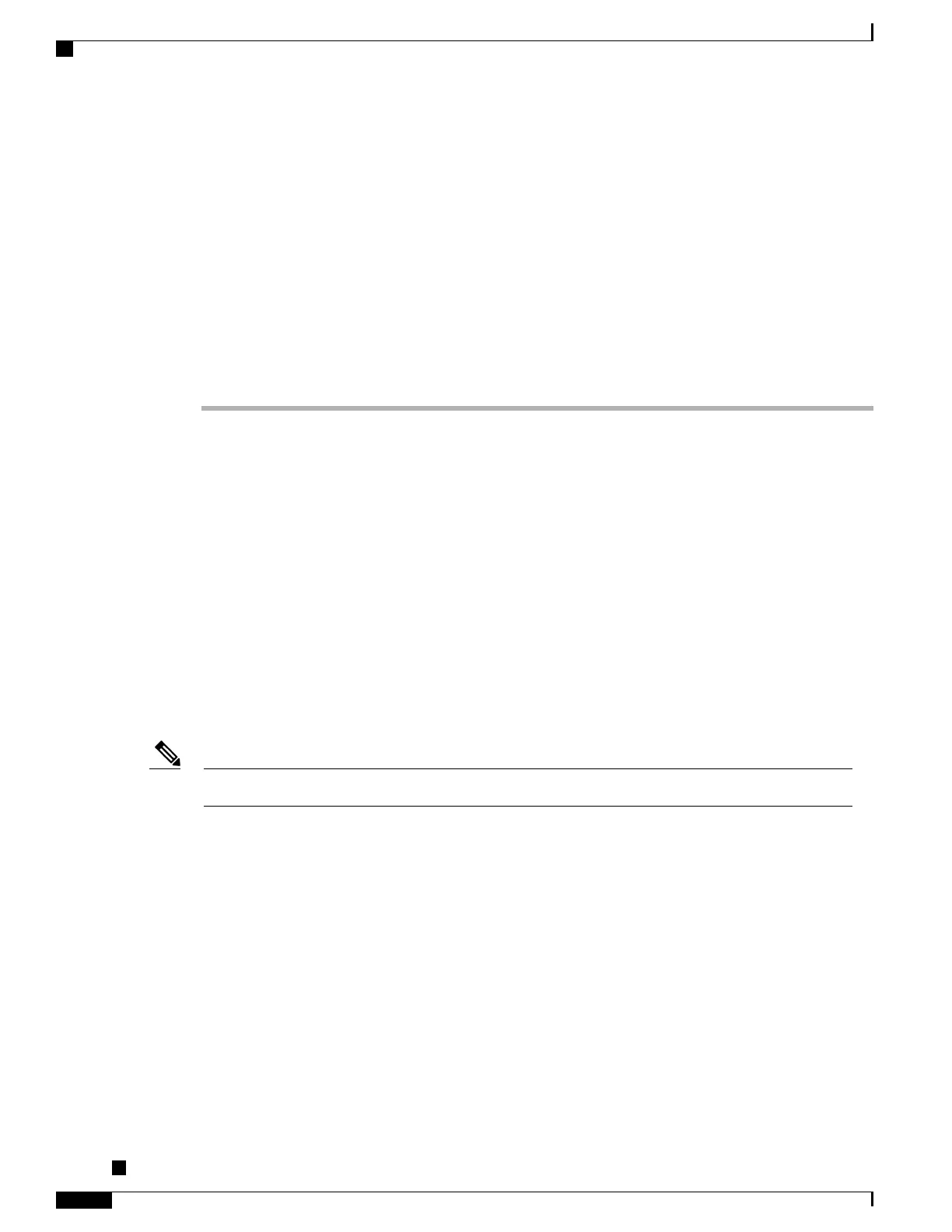For more information, see the documentation for your particular Cisco Unified Communications Manager
release.
Step 3
Use a text editor to edit the Ringlist.xml file.
See the “Custom Ring File Formats” section for information about how to format this file and for a sample
Ringlist.xml file.
Step 4
Save your modifications and close the Ringlist.xml file.
Step 5
To cache the new Ringlist.xml file:
•
Stop and start the TFTP service by using Cisco Unified Serviceability
• Disable and reenable the “Enable Caching of Constant and Bin Files at Startup” TFTP service parameter,
located in the Advanced Service Parameters area.
Custom Ring File Formats
The CiscoIPPhoneRinglist XML object uses the following simple tag set to describe the information:
<CiscoIPPhoneRingList>
<Ring>
<DisplayName/>
<FileName/>
</Ring>
</CiscoIPPhoneRingList>
The following characteristics apply to the definition names. You must include the required DisplayName and
FileName for each phone ring type.
•
DisplayName specifies the name of the custom ring for the associated PCM file that displays on the
Ring Type menu of the phone.
•
FileName specifies the name of the PCM file for the custom ring to associate with DisplayName.
The DisplayName and FileName fields must not exceed 25 characters in length.Note
The PCM files for the rings must meet the following requirements for proper playback on the phones:
•
Raw PCM (no header)
•
8000 samples per second
•
8 bits per sample
•
Mu-law compression
•
Maximum ring size = 16080 samples
•
Minimum ring size = 240 samples
•
Number of samples in the ring = multiple of 240.
•
Ring start and end at zero crossing.
Cisco Unified IP Phone 8961, 9951, and 9971 Administration Guide for Cisco Unified Communications Manager
10.0
176
Custom Phone Rings

